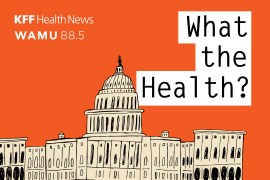State and local governments have received more than $7.5 billion in opioid settlement funds to date, and everyone’s lining up to have their say in how it’s spent.
Of course, that means there’s also plenty of controversy. The latest development comes this morning, as a coalition of 192 recovery and harm reduction organizations across dozens of states issued a call to action — shared first with KFF Health News — saying the windfall must be spent on public health approaches and “not a single dollar” on law enforcement.
“We’re demanding it be spent in ways that actually solve problems and don’t continue to increase deaths or perpetuate the war on drugs,” said Elizabeth Burke Beaty, founder of the National Sea Change Coalition, one of the groups that led the effort.
Many law enforcement agencies and elected officials disagree, saying officers are on the front lines of the opioid crisis and deserve these dollars.
Opinions are fierce, given the money’s potential to shape addiction treatment and prevention efforts for years. Annual payouts are expected through 2038. Meanwhile, hundreds of thousands of Americans continue dying of drug overdoses.
Every state is handling its funds in its own way, and the federal government, which was not a party to most of the settlements, has remained largely silent.
The document released by advocates today — which they’re calling a “roadmap” to guide officials in charge of the funds — builds on themes that have been resonating nationwide.
It lists priorities such as increasing access to medications to treat opioid-use disorder and overdose prevention centers, where people can use drugs under supervision, as well as housing services, legal aid and recovery-to-work programs. The advocates point to a $1 million allocation to Queen City Harm Reduction in Mecklenburg County, N.C., for housing supports as a good example.
The document also identifies six ways in which advocates do not want money to be spent. Topping the list is funding law enforcement personnel and equipment. Further down are abstinence-only treatment centers, unproven youth-focused prevention programs and services that are already funded through other mechanisms. The advocates call out Jackson County, W.Va., for giving about $290,000 to a law enforcement shooting range.
But not everyone agrees. Some people see harm reduction as enabling drug use. They say law enforcement is a key player in addressing the crisis — especially in rural communities that lack hospitals or treatment facilities.
“Sheriffs are at the forefront of the effects of the opioid crisis, including with response and recovery,” Jonathan Thompson, executive director and CEO of the National Sheriffs’ Association, said in a statement.
An estimated 65 percent of people in prison have a substance use disorder, and over the past decade, sheriffs have “led the way” in providing medical treatment behind bars, Thompson said.
With each group standing firmly behind its perspective, the debate over how to use settlement funds is set to continue for years.
Follow our ongoing coverage of settlement dollars here.
This article is not available for syndication due to republishing restrictions. If you have questions about the availability of this or other content for republication, please contact NewsWeb@kff.org.






